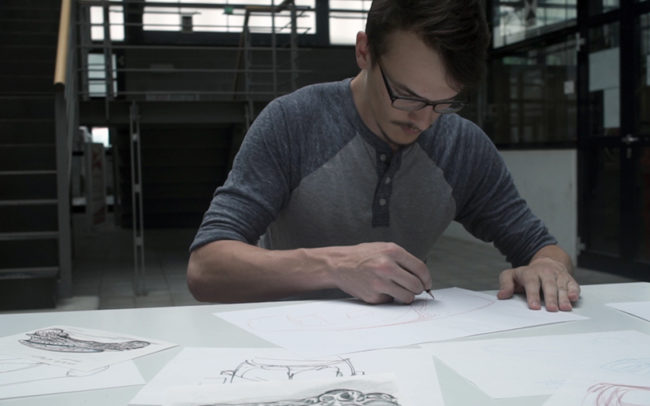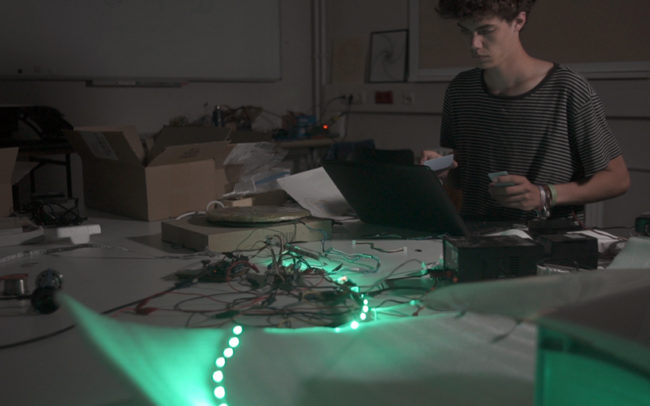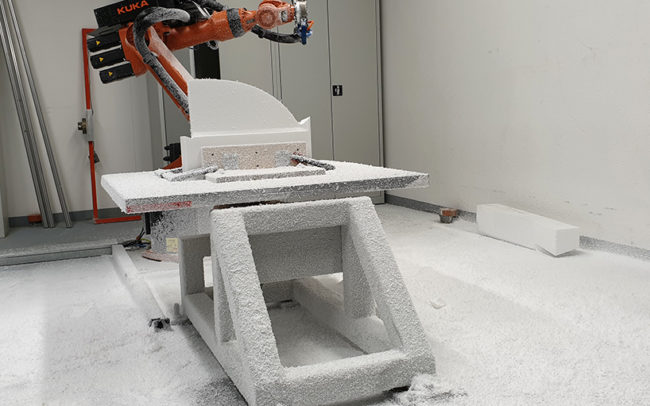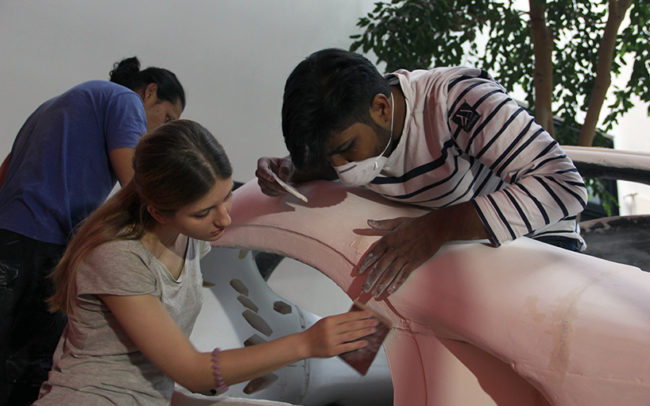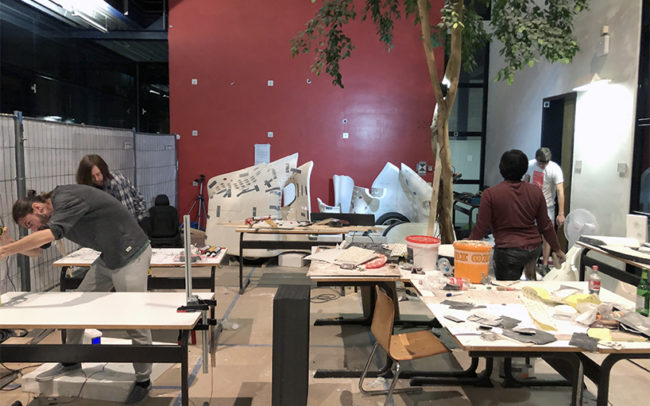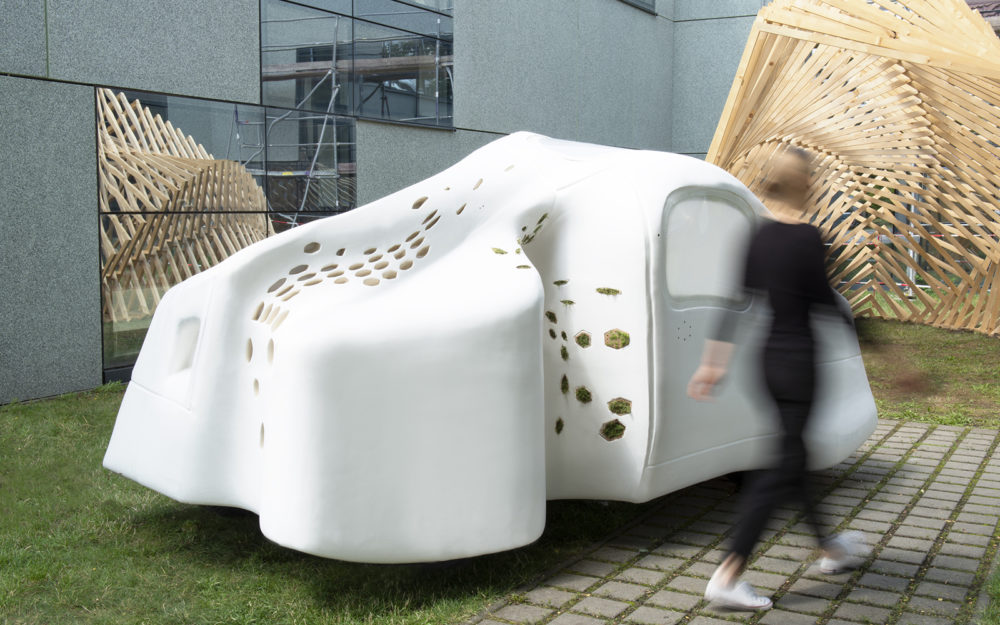a prototype for the future of urban mobility
The future of urban mobility is facing tremendous challenges such as increasing traffic, air pollution, and a lack of car-free zones. In efforts to better manage urban planning, many cities are considering or implementing vehicle bans. Unfortunately, the car-sharing alternatives provided by the industry are missing a number of important factors in comparison to owning a private vehicle, most of all a lack of personal identification. The Adaptive City Car project aims at radically breaking with current industry standards and offers a hypothetical solution for a more sustainable urban future.
The Adaptive City Car project was a collaboration between the Dessau Department of Design the Dessau Institute of Architecture, supported by the German car manufacturer AUDI. The result of the three-months course is a one-to-one model of an autonomous shared car, that would provide better air quality, room for various activities during driving and most of all the feeling of occupying a personal space – a highly individualised experience due to the integration of adaptive technologies and the implementation of living organisms.
Left: Front view of finished Adaptive City Car. Right: Interacting with moss elements on the car’s exterior
The organic design of the car is based on generative principles that aim at offering an alternative to the artificial and standardised appearance of ordinary vehicles. In addition to a structure that seems naturally grown, certain areas of the shell are designed to encourage the growth of moss and lichen to filter air pollutants entering the car’s interior. The asymmetric shape of the vehicle allows for more internal space but also the integration of large skylights, made from opacity-changing smart glass, that direct the visual focus of passengers from unpleasant traffic situations to the environment. Sensors that respond to the presence of individuals control integrated light and audio feedback in order to increase the passengers’ identification with the self-driving vehicle.
Left: When a person approaches the car responds through audio, light and the windows’ transparency. Center: Detail of the car’s porosity pattern. Right: Through smart electronics and adaptive materials the car responds to a person’s individual preferences
The 1:1 model was robotically produced from 92 bespoke components that were assembled on a four-wheel platform sponsored by AUDI. Each element was hand-coated with up to three layers of polystyrene adhesive, sanded and then glued to its neighbours. Once all units were in place the completed vehicle was painted and the adaptive technologies and organic materials were installed. The total working time on the project exceed 10.000 hours of labor.
Work in progress. From top left to bottom right: Early phase of design sketching. Developing and testing electronic components. Robotic Hotwire cutting and milling of EPS components. Finishing the exterior surface of the car. The whole team doing nightshifts. Various tasks performed in designated areas. Preparing individual components for assembly. The vehicle is built up from 92 individual components.
The Adaptive City Car in front of the historical Bauhaus Building by Walter Gropius.







